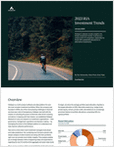Initial public offerings in Japan have been in the doldrums for a while. A sales tax increase back in April put the lid on optimism about the economy, and as a result not just the number of IPOs, but the prices they brought, have been disappointing this year.
But the trouble didn’t really start in April. Japan’s IPO market “really crashed” and “was almost nonexistent for about a year or two after Lehman crashed.” Since then, however, it’s “started to creep up,” with 20 IPOs coming in 2010, according to Kenichi Amaki, comanager of the Matthews Asia Fund.
In 2013 that rose to 54, and so far in 2014 there have been 41. “In terms of the number of companies, the IPO market has gotten much healthier, but it’s still much smaller” than it was in 2004 and 2005, with the latter seeing 100 companies making their debuts, according to Amaki.
While the numbers may be coming back slowly, neither offerings nor valuations have made it quite back to where they were either. Ernst & Young’s report on global IPO trends for the second quarter of 2014 indicated that, despite the fact that “[t]he second quarter of the year has historically seen a lull in IPOs in Japan,” this year “18 IPOs rais[ed] combined proceeds of U.S.$1.6 billion. This included three of the region’s top 10 largest deals: Seibu Holdings Inc., Invesco Office J-REIT Inc. and NIPPON REIT Investment Corp.”
The third quarter thus far has seen smaller offerings than in the first half, according to EY’s Q3 report, but nonetheless the trend appears positive. Shinichiro Suzuki, Japan IPO leader, said in the report, “Under fundamentally unchanged market conditions, Japan’s IPO market remains strong with 10 listings in Q3 ’14 raising a total of U.S.$238 million altogether. Internet-related technology, media and entertainment (dining, hospitality and advertising) companies dominated the market, making up 80% of new listings in Q3 ’14.”
“Following a variety of large listings in H1 ’14, including one of the world’s biggest listings of the year to date, Japan Display Inc., Q3 ’14 has generally seen smaller companies coming to market, including an increasing number listing on the Tokyo Stock Exchange’s junior market, MOTHERS (eight IPOs which raised U.S.$198 million altogether). Strong IPO performance is likely to continue, with a number of large IPOs already scheduled for Q4 ’14,” Suzuki said.
However, investors may be looking for a change from small to large, along with better valuations than for a number of companies that recently went public—such as Japan Display, which has fallen to less than half of its March listing price and fell 18% on its announcement on October 16 that it was closing some of its Japan factories that make smartphone high-definition panels.








 October 23, 2014 at 09:20 PM
October 23, 2014 at 09:20 PM










